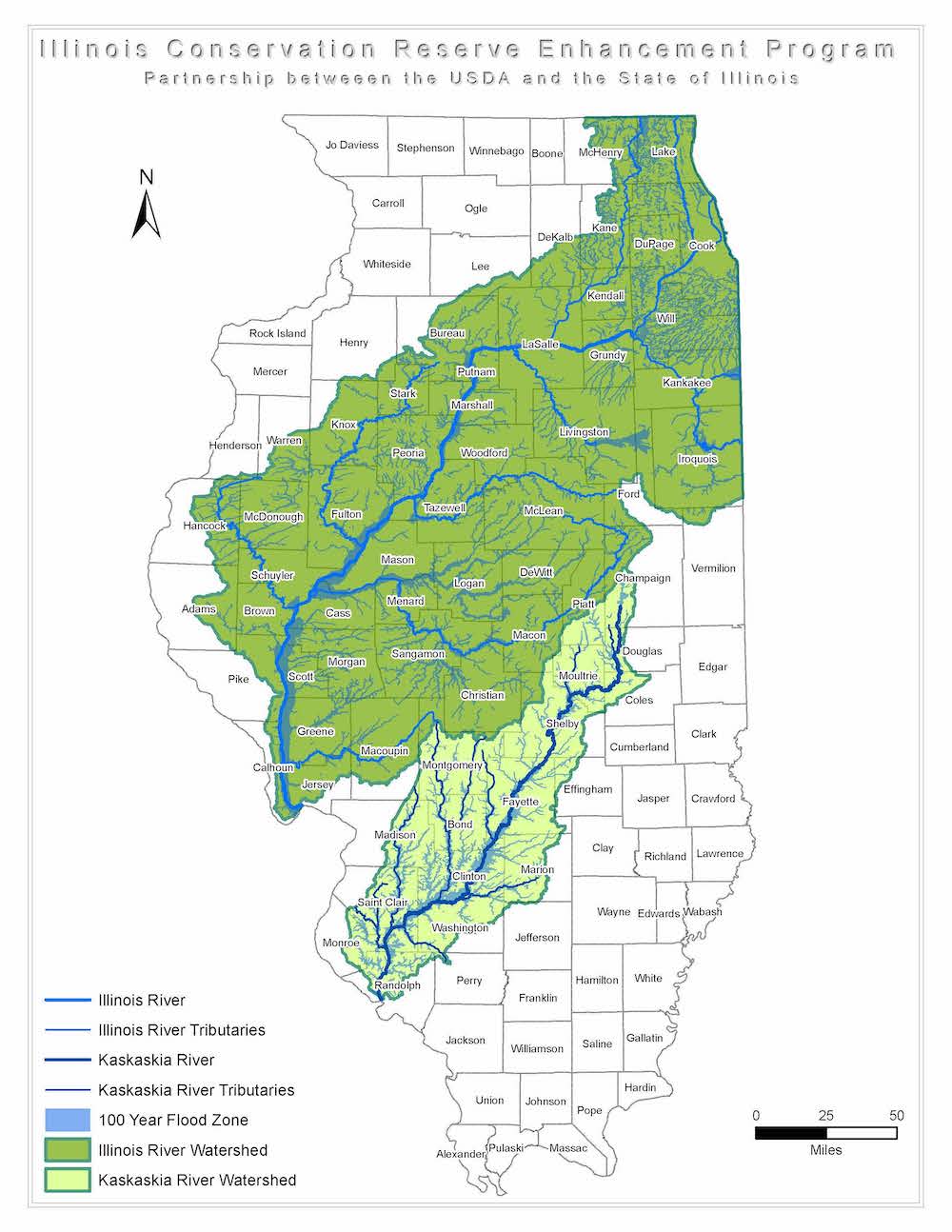
Photo courtesy of the Illinois Department of Natural Resources.



Photo courtesy of the Illinois Department of Natural Resources.
On June 15, 2022, the Conservation Reserve Enhancement Program (CREP) reopened to enrollment.

For more than 20 years, CREP has been a successful partnership between the U.S. Department of Agriculture (USDA), Farm Service Agency (FSA), the Illinois Department of Natural Resources (IDNR) and the local Soil and Water Conservation Districts (SWCDs). As a subprogram to USDA’s widely popular Conservation Reserve Program (CRP), CREP provides long-term environmental benefits by allowing up to 232,000 acres of eligible environmentally sensitive lands within the Illinois River and Kaskaskia River watersheds to be restored, enhanced, and protected over periods ranging from 15 years to perpetuity.
Illinois CREP was created through an agreement between USDA/FSA and the State of Illinois in March of 1998. In 2015, the Illinois CREP program was placed under suspension due to the lack of a state budget. After CREP funding was reinstated in 2017, IDNR and FSA began the long process to restart the program. IDNR began hiring new CREP staff and re-negotiating the FSA/IDNR CREP agreement. IDNR also worked with SWCDs to develop new agreements and contracts, and recently hired a team of specialists to work directly with landowners. The amended CREP agreement was executed in 2021 and IDNR Director Colleen Callahan reopened the program on June 15, 2022. State funding for the program is provided through Governor JB Pritzker’s Rebuild Illinois capital program.

In CREP, landowners enroll frequently flooded and environmentally sensitive cropland in a federal CREP/CRP contract with FSA. IDNR extends the environmental benefits of that federal contract by enrolling the land into an Illinois CREP grant of conservation right and easement agreement (easement) for 15 years or in perpetuity beyond the expiration of the federal CREP/CRP contract. In exchange for voluntarily removing land from production, landowners receive compensation to implement conservation practices.
The goals of CREP are to reduce sediment and nutrient runoff, improve water quality, and create and enhance critical habitat for fish and wildlife populations on private lands. As one of the oldest and most popular CREP programs in the nation, the CREP partnership has achieved restoration and long-term protection on more than 90,000 acres in conservation easements. With more than 90 percent of land in Illinois privately owned, programs such as CREP are essential to provide private landowners with opportunities to implement sound conservation practices on their own land.

Interested farmers, ranchers and agricultural landowners are encouraged to contact the Illinois Department of Natural Resources, Farm Service Agency or their local Soil and Water Conservation District for more information about enrolling in Illinois CREP.
Written with contributions by the CREP Conservation Resource Specialists.
Michelle Bloomquist is the Manager of the Conservation Reserve Enhancement Program at the Illinois Department of Natural Resources.
Justin Ramey is a Private Lands Ecologist at the Illinois Department of Natural Resources.
Chris Young is Director of the Illinois Department of Natural Resources’ Office of Resource Conservation.
Submit a question for the author